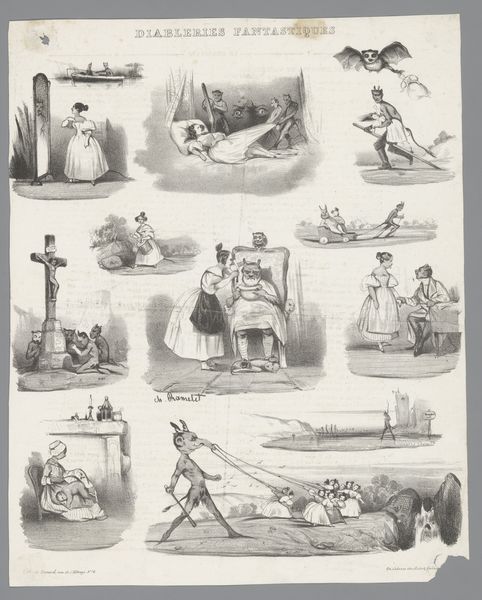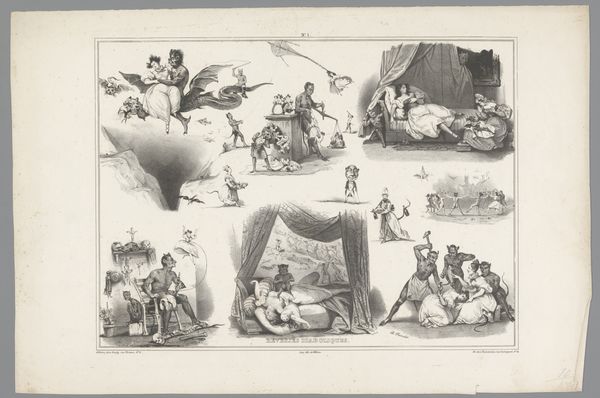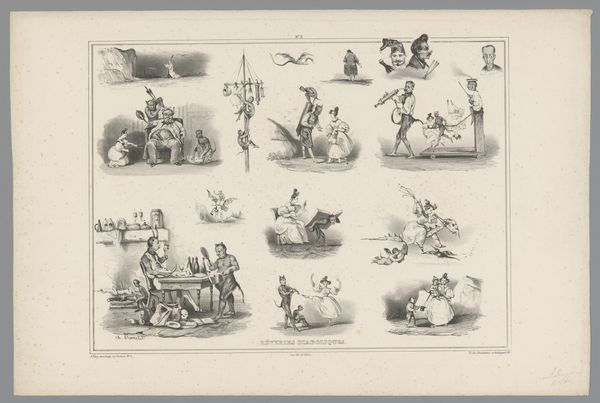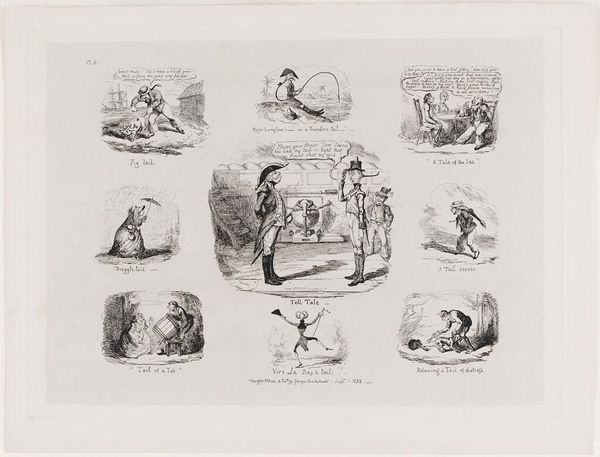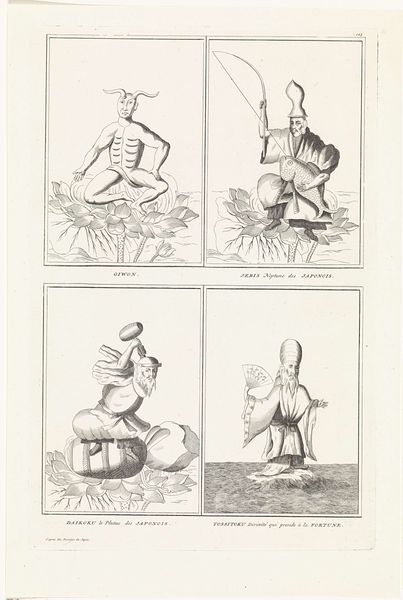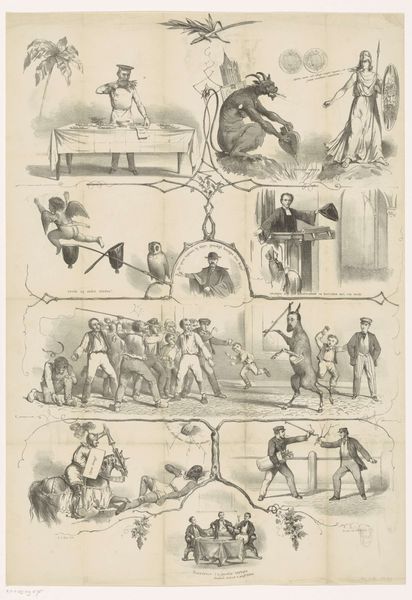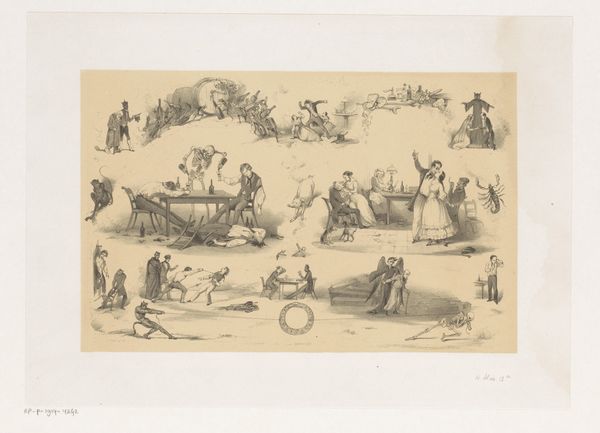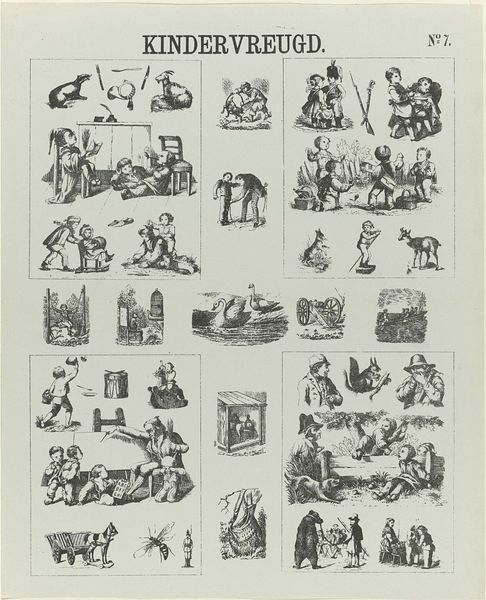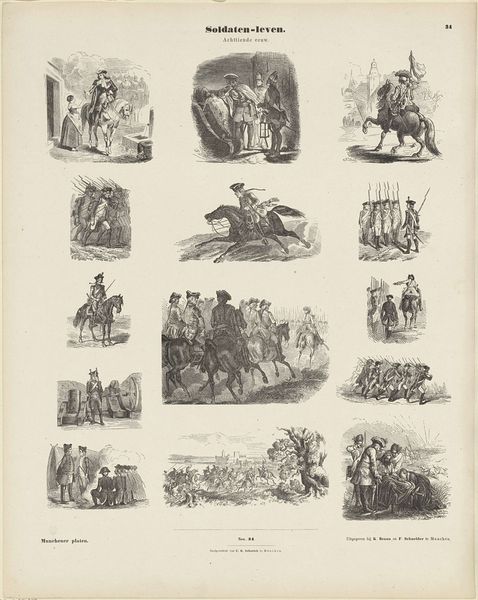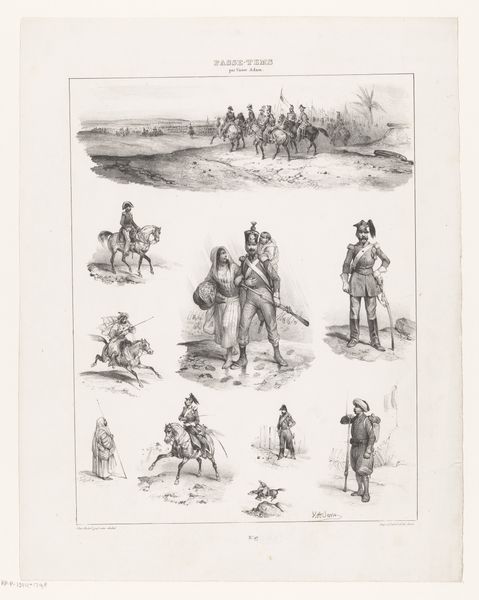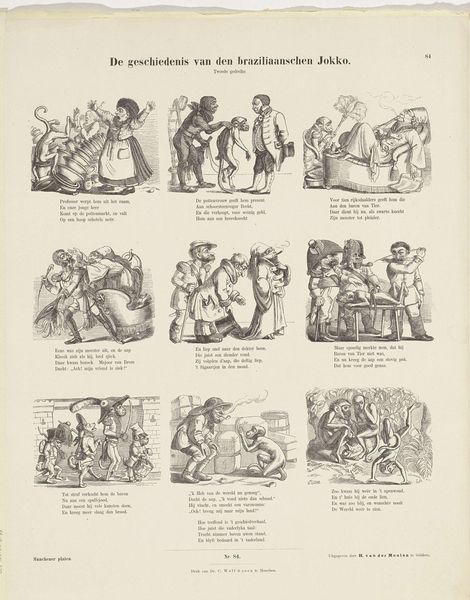
drawing, print, paper, ink
#
drawing
#
narrative-art
# print
#
caricature
#
figuration
#
paper
#
ink
#
romanticism
#
genre-painting
Dimensions: height 298 mm, width 230 mm
Copyright: Rijks Museum: Open Domain
Curator: Here we have Charles Ramelet's "Veertien voorstellingen met duivels," or "Fourteen Representations with Devils," created around 1833. It’s currently held in the Rijksmuseum collection and rendered in ink on paper. Editor: It’s a chaotic yet delightful collection of scenes! A real romantic fantasy... or nightmare. My eye jumps from one vignette to the next; there's a theatrical energy to the composition as a whole, which is impressive in such a limited color palette. Curator: Indeed. The Romantic era leaned into emotional intensity, often symbolized through fantastical figures. Here, the devils seem to represent societal anxieties or perhaps hidden desires. It makes me wonder, what did "devilry" signify in 19th-century France? Editor: Notice how the figures are positioned. Often in the top, more centered area the scenes feel full of joy and movement. Further down on the paper, as the devilish figures present, there seems to be confusion or an unsettling quality in the scene's intention. Curator: I’m also intrigued by the interplay between the figures; each mini scene suggests a narrative ripe for interpretation. I see suggestions of vanity and playful torment. One panel seems like an obvious statement of an imbalance between gendered positions... fascinating to see a potential interpretation of marriage. Editor: The loose, sketchy lines contribute to this sense of instability, it amplifies that gothic sensibility inherent to Romanticism. Look at the top portion! What initially read as fun is suddenly quite dark as your eye finds skeletons or exaggerated grimacing figures. It's a game of reveal and conceal. Curator: This work holds up a distorted mirror to society, reflecting its underbelly through the distorted lens of devilish caricature. What do you see in the continuity of these themes, do you think? Are there contemporary parallels that strike you? Editor: Well, what strikes me most is Ramelet’s awareness of artifice. It seems to suggest to viewers to observe the performance of our own roles—the ways in which societal structures inform even our most intimate moments. Thanks for illuminating this work for me. Curator: My pleasure. I am certain this print offers endless insight for us both.
Comments
No comments
Be the first to comment and join the conversation on the ultimate creative platform.
